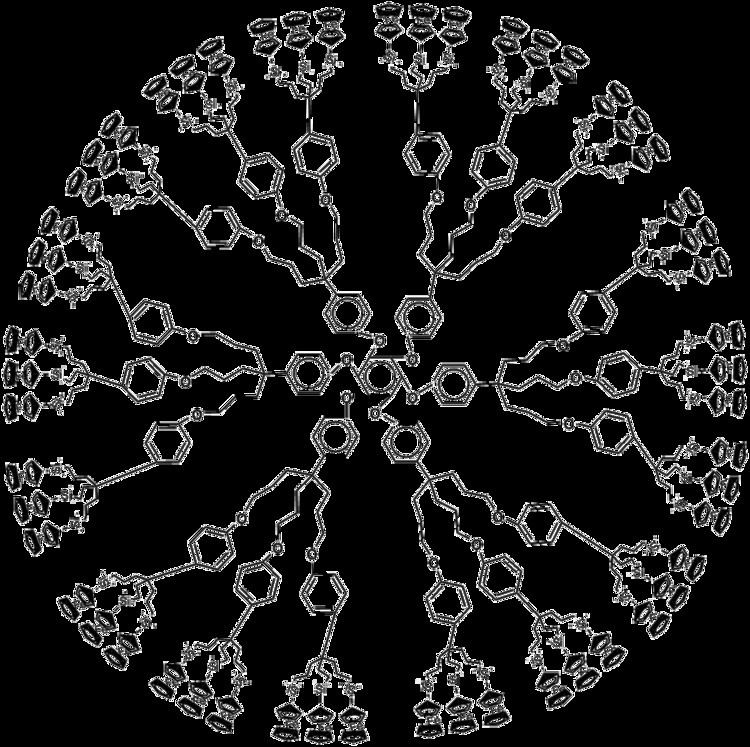 | ||
Ferrocene-containing dendrimers are of interest for their ability to do multielectron-transfers and they have been synthesized by convergent and divergent approaches. There are three basic categories that ferrocene-containing dendrimers can be placed in: (a) dendrimers with ferrocene cores, (b) dendrimers with peripheral ferrocene groups, and (c) dendrimers with ferrocene at the core and the peripheral.
Contents
Synthesis
Ferrocene-containing dendrimers can be synthesized by both convergent and divergent methods. Some of the first dendrimers of this type, were made by attaching ferrocene units to small silicon containing dendrimers.
Dendrimers with peripheral ferrocene groups are usually synthesized by attaching ferrocene to the core by either olefin metathesis or by hydrosilylation reactions. As an example, compound 1 was synthesized by a divergent approach in which tetraallylsilane undergoes Pt-catalyzed hydrosilylation to form the core. This core was then reacted with ferrocenyllithium to form 1. Convergent approaches can also be used to make dendrimers with peripheral ferrocene. As an example, figure 1 shows a 54-ferrocene dendrimer which was synthesized by a fast convergent approach.
Dendrimers with ferrocene cores can be synthesized by first making ferrocene derivatives with functional groups. An example of this would be compounds 2 and 3. These compounds can undergo hydrosilylation reactions to form dendrimers. As an example, decaallylferrocene (3) can undergo hydrosilylation with dimethylferrocenylsilane to form a decaferrocenyl functionalized ferrocene as is shown in figure 2.
Properties and applications
There are many potential applications for ferrocene containing dendrimers. The CV of the 54-ferrocene containing dendrimer in figure 2 gave a single reversible wave. The ferrocenyl moieties on these dendrimers are essentially noninteracting redox centers. Because of this, they could potentially be used as molecular batteries or sensors. There have been some efforts to synthesize dendrimers that behave similar to redox proteins. Asymmetric dendrimers similar to the one in figure 3 have been synthesized and have undergone inclusion complexation by beta-cyclodextrin.
